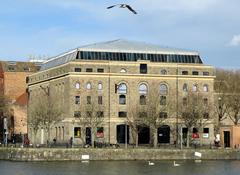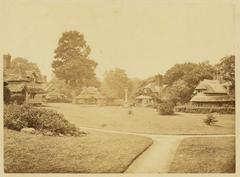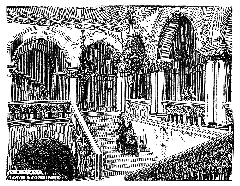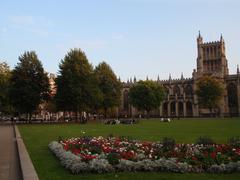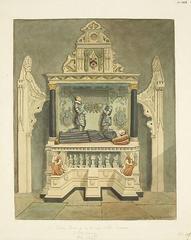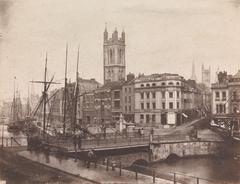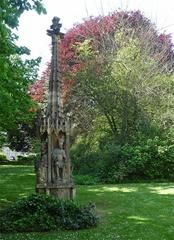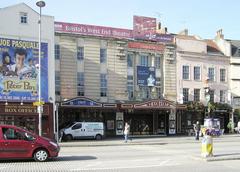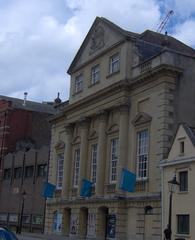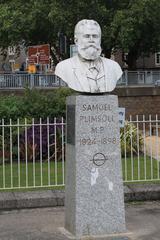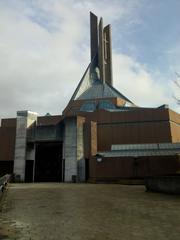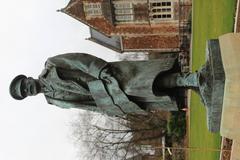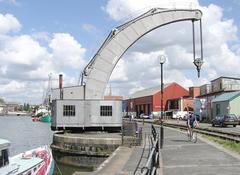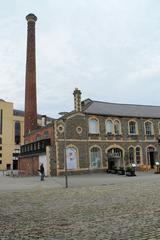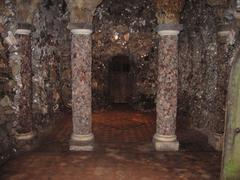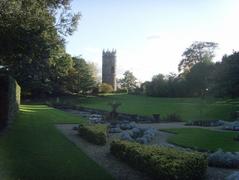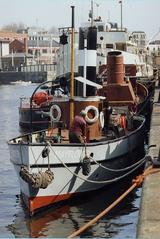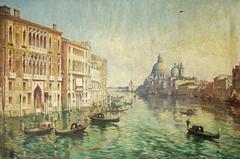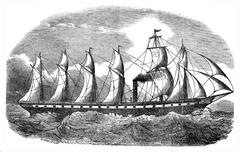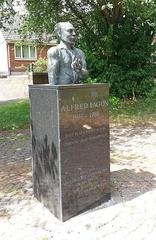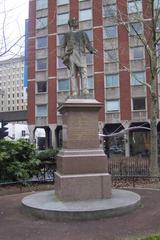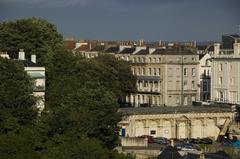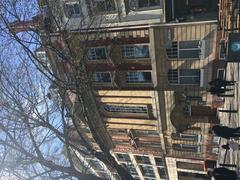
Bristol Royal Hospital for Children Visiting Guide: Hours, Tickets, and Nearby Attractions
Date: 04/07/2025
Introduction
The Bristol Royal Hospital for Children (BRHC) is a leading center for pediatric healthcare and a unique cultural landmark in Bristol, United Kingdom. With a heritage that reaches back to the Victorian era, BRHC today combines state-of-the-art clinical services, family-centered care, and an innovative approach to art and design within its environment. Whether you are supporting a loved one, interested in the city’s healthcare heritage, or drawn to the hospital’s artistic features, this detailed guide provides everything you need to plan your visit.
Table of Contents
- Introduction
- Historical Overview
- Milestones and Achievements
- Visiting the Hospital
- Charitable Support and Community Engagement
- Hospital’s Role within UHBW NHS Foundation Trust
- Frequently Asked Questions (FAQs)
- Art and Culture at BRHC
- Visitor Experience and Tips
- Conclusion and Recommendations
- Sources
Historical Overview
Early Origins and Foundations
Bristol’s tradition of pediatric care began in 1866 with the founding of the Royal Hospital for Sick Children near St Michael’s Hill. As one of the first dedicated children’s hospitals outside London, it responded to the growing awareness of children’s unique healthcare needs during the Victorian era. A purpose-built facility was opened in 1883, designed by Robert Curwen, with specialized wards, convalescence areas, and pioneering child-focused spaces, including playrooms and accommodation for mothers (Historic Hospitals).
20th Century Developments
Throughout the 20th century, the hospital expanded its services, becoming an integral part of Bristol’s healthcare network and the wider South West region. With the rise of the NHS, the hospital introduced outpatient clinics, isolation wards, and new treatments, cementing its reputation for excellence in pediatric medicine.
The Modern Hospital (2001) and Expansion
By the late 20th century, the original Victorian buildings could no longer meet the demands of modern pediatric care. In 2001, the new, purpose-built Bristol Royal Hospital for Children opened on Upper Maudlin Street, following a significant community fundraising effort led by Wallace & Gromit’s Grand Appeal (BRHC About Us; BRHC Annual Report 2022-23, p.36). Further expansion in 2007 and 2015 consolidated children’s services from Southmead and Frenchay Hospitals, making BRHC the regional center of excellence for pediatric care (BRHC About Us).
Milestones and Achievements
- Specialist Status: One of 11 specialist children’s hospitals in England and the only dedicated children’s emergency department in the South West.
- Regional Major Trauma Centre: Designated as the Paediatric Major Trauma Centre for the South West, serving nearly one million children (BRHC Annual Report 2022-23, p.4-5).
- Research and Innovation: Home to the Coral Reef Paediatric Clinical Research Facility, supporting advanced clinical trials in a child-friendly setting (Coral Reef Facility).
- Patient Care: In 2022-23, BRHC treated nearly 3,000 inpatients, 6,000 day patients, and over 78,000 outpatient contacts, as well as almost 49,000 emergency attendances.
- Staff and Facilities: Employs nearly 1,900 staff, operates 179 inpatient and critical care beds, 31 neonatal intensive care cots, and 9 pediatric theatres.
Visiting the Hospital
Visiting Hours
BRHC balances the need for patient rest with family support. Standard visiting hours are 10:00 AM to 8:00 PM daily, though specific wards may have variations. Always check the hospital’s website or contact the ward directly for up-to-date information.
Appointments and Emergency Care
- Appointments: Outpatient appointments are arranged via referrals from your GP or another healthcare provider.
- Emergency Care: The hospital’s emergency department is open 24/7 for urgent pediatric needs.
Accessibility and Transport
- Location: Upper Maudlin Street, Bristol city center.
- By Car: On-site parking, including spaces for disabled visitors, is available.
- Public Transport: BRHC is well-served by city bus routes; Bristol Temple Meads railway station is a short taxi or bus ride away.
- Cycling/Walking: Bicycle parking and pedestrian access are provided. The hospital is fully wheelchair accessible, with lifts and adapted restrooms (UHBW Contact).
Nearby Attractions
- Bristol Museum & Art Gallery: A short walk from the hospital.
- Clifton Suspension Bridge: Bristol’s most iconic landmark.
- Bristol Harbourside: Features shops, restaurants, and historic ships.
- St Michael’s Hill: Notable for its historical significance and Georgian architecture.
- Bristol Zoo Gardens: Family-friendly attraction near the city center.
Charitable Support and Community Engagement
Wallace & Gromit’s Grand Appeal has played a transformative role, raising more than £20 million for enhancements in equipment, family accommodation, and the arts program (Grand Appeal). Community events like the “Gromit Unleashed” sculpture trails attract visitors and generate vital funds for the hospital (BRHC News).
Hospital’s Role within UHBW NHS Foundation Trust
Since April 2020, BRHC has been integrated into the University Hospitals Bristol and Weston NHS Foundation Trust (UHBW), ensuring continuity of specialist care, research, and patient-centered services across the region (UHBW Information).
Frequently Asked Questions (FAQs)
Q: What are the visiting hours at BRHC?
A: Generally 10:00 AM to 8:00 PM daily, but check with your specific ward.
Q: How do I book an appointment?
A: Through referral from your GP or healthcare provider.
Q: Is the hospital wheelchair accessible?
A: Yes, the hospital is fully accessible with lifts and adapted facilities.
Q: Are tickets needed for visits?
A: No tickets are necessary for visiting patients or public areas.
Q: What attractions are nearby?
A: Bristol Museum & Art Gallery, Clifton Suspension Bridge, Harbourside, and Bristol Zoo Gardens.
Art and Culture at BRHC
Vision and Philosophy
BRHC is recognized as a pioneering example of integrating art into healthcare environments. From its inception, the hospital engaged artists, designers, and the local community to create a welcoming and stimulating atmosphere, especially for children and families (Public Art Online).
Major Art Installations
- Lollypop Be-Bop Sculpture: An 18-metre interactive sculpture by Andrew Smith outside the main entrance. It features colorful hoops, interactive lights, and music composed by young patients; its lighting was restored in 2022 (Secret Bristol; APRB).
- Integrated Interior Artworks: Over 20 artists have contributed to artworks throughout the hospital, including Ray Smith, Eva Elsner, Annie Lovejoy, and others, enriching corridors and waiting areas with engaging pieces (Public Art Online).
- Digital and Interactive Art: Collaborations with Watershed and Arnolfini Education lead to digital installations and a children’s website, fostering creativity and engagement (Public Art Online).
Community Involvement
The arts program was largely funded through public fundraising, particularly The Wallace & Gromit Grand Appeal, which dedicated a significant portion of its funds to art projects (Grand Appeal). Community workshops and ongoing feedback ensure the program remains relevant and inclusive.
Cultural Impact
BRHC drew inspiration from international models and set new standards for the therapeutic use of art in UK children’s hospitals. The ongoing arts program, overseen by a dedicated coordinator, includes regular workshops and new commissions (Public Art Online).
Visitor Experience and Tips
- Art Trail: Start at the Lollypop Be-Bop sculpture outside the main entrance. Inside, look for integrated artworks in waiting areas and corridors.
- Accessibility: All public spaces and artworks are accessible to wheelchair users and visitors with limited mobility.
- Engagement: Information on current arts activities and workshops is available at information desks and on the hospital website.
- Support: Visitors can support arts and wellbeing initiatives by donating to The Wallace & Gromit Grand Appeal (Grand Appeal).
Conclusion and Recommendations
The Bristol Royal Hospital for Children is not just a center of clinical excellence but a vibrant, compassionate, and culturally rich institution. With its pioneering approach to integrating art and family-centered design, BRHC offers a healing environment for patients and a meaningful experience for visitors. Its proximity to Bristol’s historical and cultural attractions further enriches any visit.
For the latest information on visiting hours, events, and arts programs, check the hospital’s official website and follow the hospital and The Wallace & Gromit Grand Appeal on social media. Download the Audiala app for curated guides and interactive content about BRHC and other Bristol landmarks.
Sources
- Bristol Royal Hospital for Children: History, Visitor Information, and Patient Services, University Hospitals Bristol and Weston NHS Foundation Trust
- Historic Hospitals Survey: Avon Region, Historic Hospitals
- Bristol Royal Hospital for Children Annual Report 2022-23, University Hospitals Bristol and Weston NHS Foundation Trust
- Public Art Online: Bristol Royal Hospital for Children Arts Programme
- Wallace & Gromit’s Grand Appeal
- Secret Bristol Public Art
- APRB Lollypop Be-Bop Project

